#bracteate
Photo
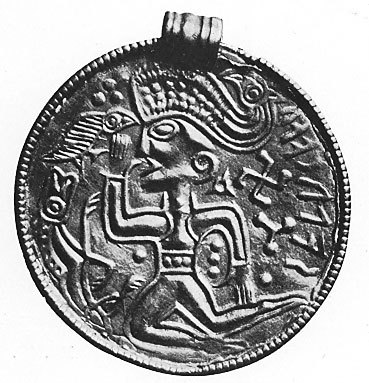

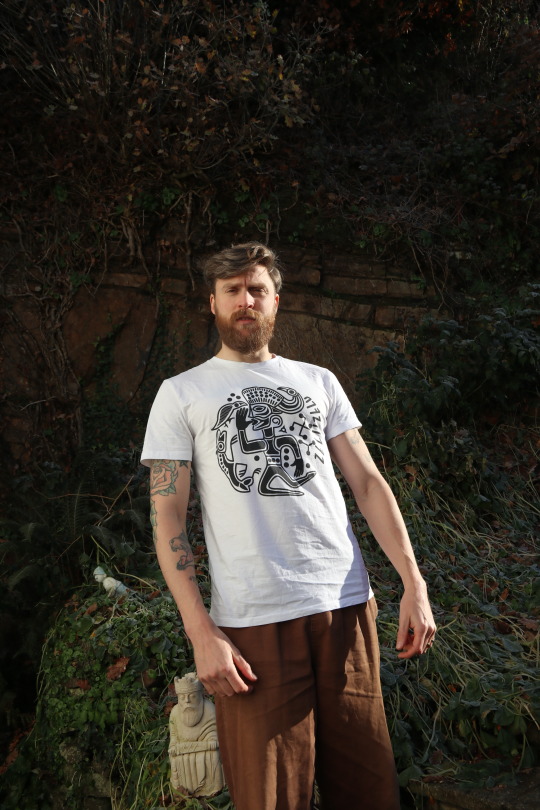
the Germanic pagan Sigurd design (sucking dragon blood from his thumb so he can understand the speech of birds) from bracteate DR-BR55 is available on t-shirts, hoodies, stickers, and vests etc.https://www.survive-the-jive.com/listing/sigurd-thumb-sucker-range
#sigurd#sigfried#volsung#odin#bracteate#germanic#nordic#norse#pagan#heathen#heathen shirt#asatru#witchcraft#pagan gifts
25 notes
·
View notes
Text
Vindelev hoard update
I know, I know, everyone probably already gushed about the latest Vindelev hoard bracteate news while I was taking a break from social media.
I just want to point out the most exciting bit. (And no, it’s not that we have 5th century evidence of Odin worship, although that *is* pretty dang exciting.)
These inscriptions have enough new words to add to dictionaries that runologists and linguists have to re-evaluate *all bracteates ever found* to see if new information is revealed by our expanded vocabulary.
Since many bracteates depict or are dedicated to Nordic mythical figures? New information about Old Norse deities is possibly about to be learnt.
#vindelev hoard#archaeology#denmark#bracteate#runology#linguistics#heathenry#proto-norse#JagaR Odin's Man#norse heathenry#inclusive heathenry#norse polytheism#norse paganism#runes#bracteates
1 note
·
View note
Text
What is a Bracteate? (with photos)
How is a bracteate different from a coin pendant?
A bracteate is a thin hammered metal disk, typically made of gold. Bracteates have a design on one side, that shows through on the other side because of the thinness of the metal.
Bracteates were popular in Northern, and Northeastern Europe from as early as the fifth century, through evolutions of meaning into the 17th century.
During the 17th century, bracteates were often pilgrims’ tokens,…

View On WordPress
0 notes
Text
Indian lovers suresh and priya
Doggystyle with sexy milf after yoga class
La puta de mi sobrina
Real old man teen Surprise your girlcomrade and she will tear up with
Lesbian Strap On Fuck FREE
【素人♡人妻】オカモト製黒ゴム手袋で大量ザーメン搾り取り♡中出しされて溢れ出るザーメンをすくい上げ♡Japanese Handjob Cum
Darcie Dolce and Adria Rae are lesbian Stepsisters
The Sweetheart Murders: Sexy Nude Brunette Shower Scene
Fetish teen blonde rides
Chị iu
#hobbledehoyish#hangers-on#maenades#reformist#firsthand#rebuckling#pugenello#feuille-morte#paramese#unforetold#ringed#Hispano#Member#certifications#psychoanalytical#poxes#bracteate#unthrivingly#newsmen#distasting
0 notes
Text

Silesian Bracteate Hoard Found in Poland
Archaeologists conducting excavations in the area of a former burgage plot in Szprotawa, Poland, have uncovered a treasure hoard of around 100 to 150 Silesian bracteate coins.
A burgage was a town rental property “burgage tenement”, consisting of a house on a long and narrow plot of land with a narrow street frontage. Excavations unearthed the remains of a textile bag containing neatly arranged coins in cylinder piles.
A closer examination has identified that the coins are mainly Silesian bracteates (Latin: “bractea” – plate) minted between 1250 to 1300. The coins are minted on one side from a thin plate on a soft base, which were introduced in Silesia after 1250 and phased out by thicker coins (the quarterly) during the early 14th century.


They originate from the mint workshops of Silesia, although their use was relatively short as the coins were usually called back regularly (about once or twice a year) to be exchanged for new coins.
In receiving three new coins for four old coins, the withheld 4th coin was called strike money and was often the only tax revenue of the coin mint-master. This system worked like a demurrage, with people often hoarding their coins because they lost their value.
According to Radosław Kuźbik: “In the case of cash deposits, the inevitable question is who concealed it, when and why. Specialists will want to answer this question in the near future. We can assume that it was so-called petty cash belonging to a rather wealthy person.”
The coins have been described as one of the most significant discoveries in the region, as very few coins of this type survive from the period as they were melted down on an ongoing basis.
Excavations also discovered evidence of a bridge from the 15th to 16th century and the remains of the original city walls built during the 14th century.

#Silesian Bracteate Hoard Found in Poland#Szprotawa Poland#Silesian bracteate coins#collectable coins#ancient coins#ancient artifacts#archeology#archeolgst#history#history news#ancient history#ancient culture#ancient civilizations#middle ages
22 notes
·
View notes
Photo
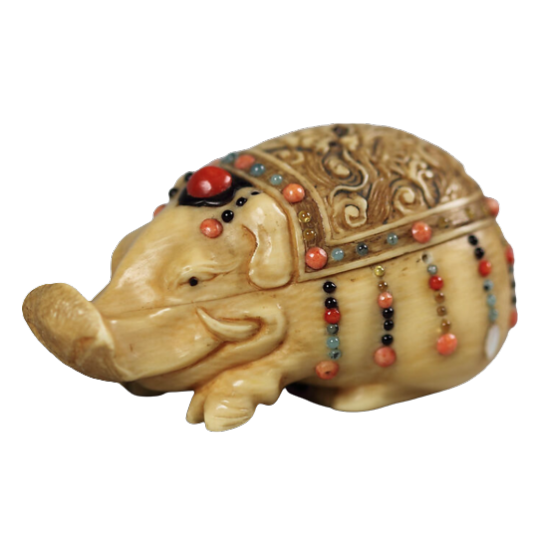
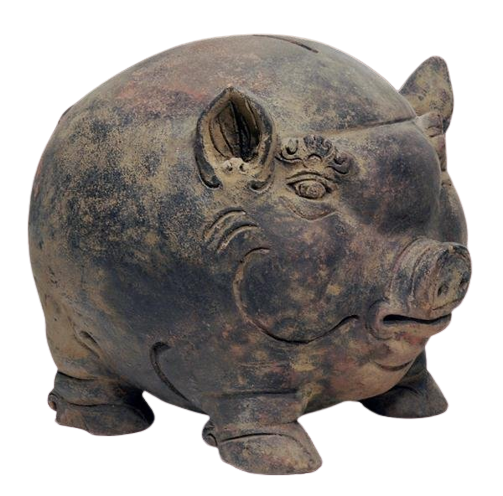


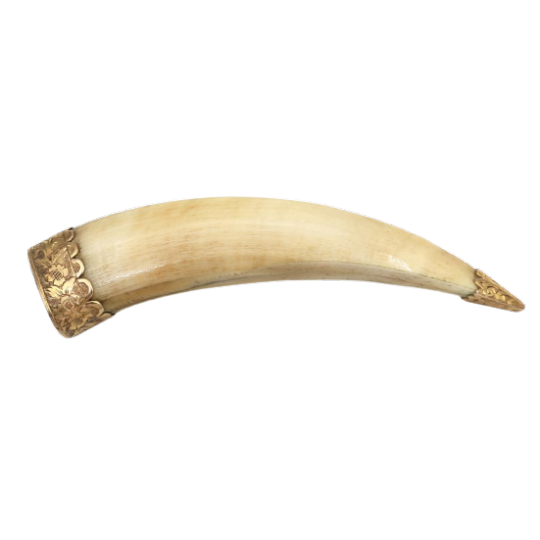
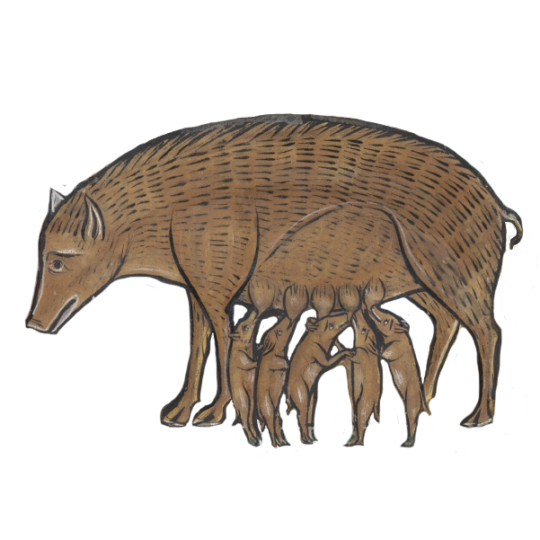
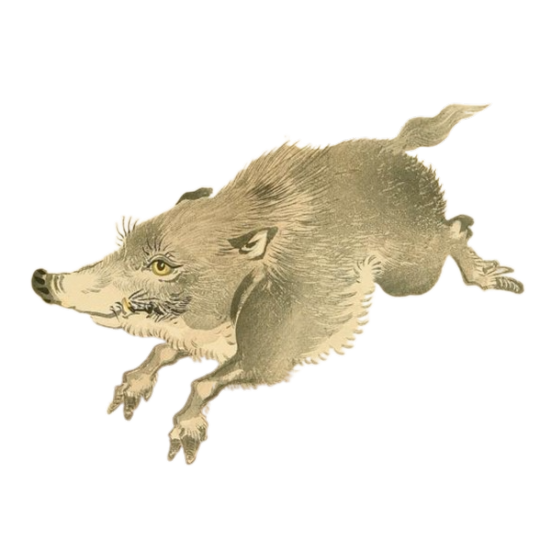

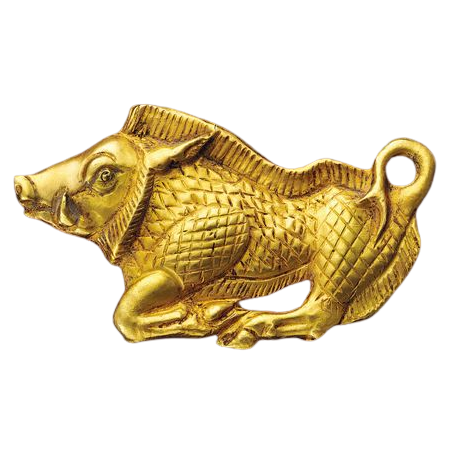
Wild boar/pig PNGs.
(1. Ivory boar from the Meiji period, 2. Majapahit pottery bank, 3. Wild pigs from illuminated manuscript, 4. “Devil Pig Whiskey Facejug” by David Scott Smith, 5. Antique boar tusk brooch, 6. Wild pig with piglets from illuminated manuscript, 7. “Wild Boar” by Kono Bairei, 8. Boar mask of shame, 9. Scythian gold boar bracteate)
#request#png#pngs#transparent#transparents#moodboard#artboard#imageboard#collage#stickers#sticker#wild boar#pig
1K notes
·
View notes
Text
The Wiuwert treasure
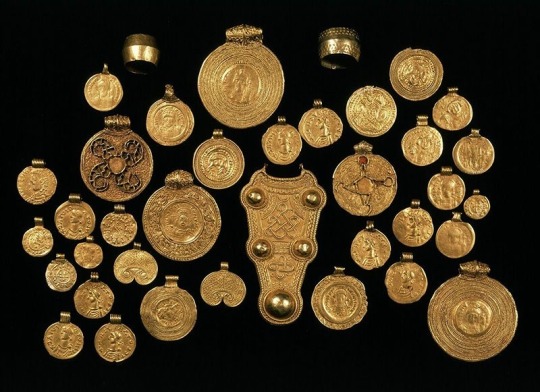
The Wiuwert/Wieuwerd treasure or hoard was found in a terp in modern Frisia.
The hoard was found in a little ceramic jar and contained the footplate of a bow brooch, two disc brooches with cloisonné, two “kidney brooches”, two finger rings, three bracteates and pendants.
These pendants were coins turned into jewelry. Their origin came from all over; Constantinopel, Ravenna, Viviers, Arles, Marseille, Sevilla and Maastricht. They are dated from the 6th and 7th century. It is assumed that the other jewelry was made from melted coins. The find itself is dated around 630.
No human remains are associated with the hoard. Most likely they belonged either to a gold smith or a local leader.
Rijksmuseum van Oudheden, Leiden - The Netherlands
Found in Wieuwerd, Frisia - The Netherlands
#frankish#merovingian#viking archaeology#archaeology#carolingian#charlemagne#field archaeology#viking mythology#merovingian archaeology#germanic mythology#norse mythology#anglo saxon#field archaeologist#frisian#viking#vikings#germanic#germanic folklore#germanic archaeology#odin#wodan#anglo saxon archaeology#history#jewelry#norse
284 notes
·
View notes
Text

Gold Bracteate
Scandinavian
400–600
The manufacture of bracteates probably originated with Roman and Byzantine portrait medallions, presented by the emperor as gifts to important figures. Here, however, the imperial image has been transformed into the depiction of a god, perhaps Odin, chief of Nordic pantheon; his oversize face is balanced atop a galloping horse with horns. With their fine workmanship and allusions to the Roman and Byzantine worlds, gold bracteates conveyed both the sophisticated taste and the high social status of their owners, who wore them as fine jewerly and hoarded them as treasure.
source
163 notes
·
View notes
Photo


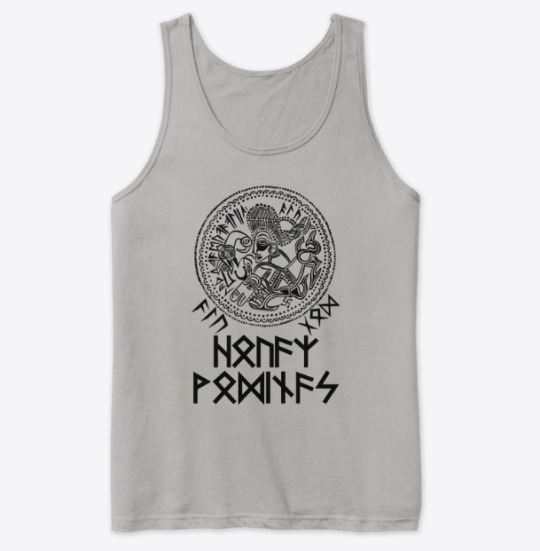
Gold Germanic bracteates often feature an image of the god Odin along side the ALU runic inscription. This range features a design from DR BR42 bracteate from the island of Funen, Denmark. The runes invoke "houaz" which is Odin as the "High" and there is also the ALU magical inscription. The runes beneath the design invoke him again: "ALU GOD / HOUAZ / WODINAZ" all of which are attested runic invocations of Odin.
BUY YOURS HERE
12 notes
·
View notes
Text
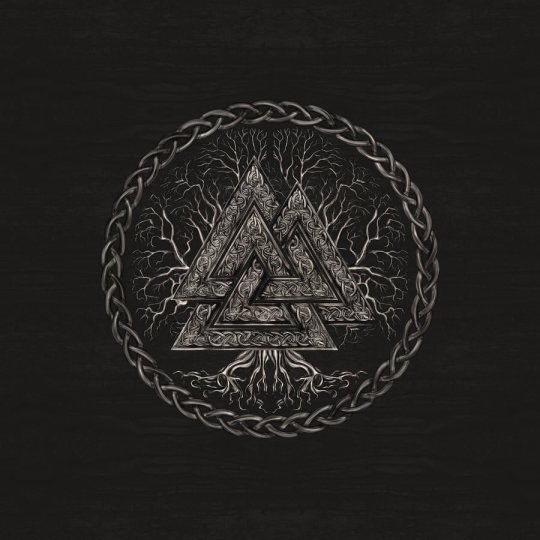

ANCIENT SCANDINAVIAN MAGICAL WORDS
alu ᚨᛚᚢ
The most common - and most, as is commonly believed, powerful - incantatory rune word. Perhaps it goes back to the most ancient northern European basis al, meaning magic power, magic in general. The magical use of the word was probably very varied. The most general interpretation is as follows - “Dedication; magical power and power; wisdom".
Several modifications of this spell are known; here are some of them: slalu - a variant supplemented by the rune of power and victory; folslalu is a complex variant known from the bracteate from Fakse; halg alu is another complicated variant, the meaning of which is restored with great difficulty.
sar ᛊᚨᚱ
Also a very common sacred word. A possible reconstruction of the meaning is “wandering in search of Power”, which should be understood not only literally, but also figuratively.
auja ᚨᚢᛃᚨ
This word itself means “luck”. The use of this word as an incantation has, accordingly, the purpose of bringing good luck.
gibulauja ᚷᛁᛒᚢᛚᚨᚢᛃᚨ
Complicated version of the previous word. This is a combination of two words meaning “to give good luck” or “to give good luck." It is important that in this version the Gebo rune appears, corresponding to the meaning of the spell as a whole.
laþu ᛚᚨᛒᚢ
A very common incantatory word; the connection of the word with an ancient stem with the meaning of “invitation”, “invocation.” This is one of the sacred words that were part of invoking spells.
laukaz ᛚᚨᚢᚲᚨᛊ
Many researchers associate this sacred word with the ancient scandal laukaz “wild onion”, which was a sacred plant and was revered as having great magical power, mainly of a protective, protective nature. Therefore, the word has a similar direction of action. However, it should be borne in mind that LaukaR is perhaps one of the oldest variants of the name of the rune Laguz, which should also be borne in mind when using this sacred word.
The names of those who practiced the Nordic Tradition also served as words of power: Erilaz - the lord of the runes; Gothi clergyman, priest; Vitki - magician, sorcerer, lord of the runes. Inscriptions - good wishes also have magical properties. The main traditional concepts are the following: Alag, "presence, influence”, Auja- “luck”, Gina- “endowed with divine power” attacks ”.
Ancient Icelandic magic words
keþa (Keþa’s) - “help of the graves” - meaning patrimonial protection
Ale - “beer, full cup” - prosperity
þaliR - “falcon, man” - courage, courage.
hararar - “agile, fast” - speed and strength
baijar - “magic” - magical power
laiþigar- “hatred, trouble” - disgusting
Halar- “stone” - resilience
viðr- “forest” -connection with nature
wiðugastir - “master” - another designation of eril
hús - “house”
ladawarija - “protected by the earth” - protection from the earth (meaning that the spirits of the earth will protect).
lönnruner- “cache of runes” - knowing the secret contained in the runes.
faikinar ist - “visited by witchcraft” - empowered
raunijar - “one who tries” - trying his hand
siklisnahli- “helping fire” - protection of the spirits of fire
teitr- “happy” -happiness, happy
elska - “love, beloved” - understanding, love.
(Adapted from L. Peschel. A Practical Guide to the Runes. St. Paul, 1996)
Valknut
There are numerous variations of the Valknut, although two specific configurations are by far the most common styles found. The first is the tricursal variant. This features three triangles interlocking with each other, each with their own separate shape. The second variant is unicursal, using a singular line to create the three interconnected triangles.
58 notes
·
View notes
Text
COPENHAGEN, Denmark (March 8th 2023) — Scandinavian scientists said Wednesday that they have identified the oldest-known inscription referencing the Norse god Odin on part of a gold disc unearthed in western Denmark in 2020.
Lisbeth Imer, a runologist with the National Museum in Copenhagen, said the inscription represented the first solid evidence of Odin being worshipped as early as the 5th century, or at least 150 years earlier than the previous oldest known reference — on a brooch found in southern Germany and dated to the second half of the 6th century.
The disc discovered in Denmark was part of a trove containing about a kilogram (2.2 pounds) of gold, including large medallions the size of saucers and Roman coins made into jewelry. It was unearthed in the village of Vindelev, central Jutland, and dubbed the Vindelev Hoard.
Experts think the cache was buried 1,500 years ago, either to hide it from enemies or as a tribute to appease the gods. A golden bracteate, a kind of thin, ornamental pendant, which carried an inscription that read, “He is Odin’s man,” likely referring to an unknown king or overlord.
“It’s one of the best executed runic inscriptions that I have ever seen,” Imer said. Runes are symbols that early tribes in northern Europe used to communicate in writing.
Odin was one of the main gods in Norse mythology and was frequently associated with war as well as poetry.
More than 1,000 bracteates have been found in northern Europe, according to the National Museum in Copenhagen, where the trove discovered in 2020 is on display.
Krister Vasshus, an ancient language specialist, said that because runic inscriptions are rare, “every runic inscription (is) vital to how we understand the past.”
“When an inscription of this length appears, that in itself is amazing,” Vasshus said. “It gives us some quite interesting information about religion in the past, which also tells us something about society in the past.”
During the Viking Age, considered to be from 793 to 1066, Norsemen known as Vikings undertook large-scale raiding, colonizing, conquest and trading throughout Europe. They also reached North America.
The Norsemen worshipped many gods and each of them had various characteristics, weaknesses and attributes. Based on sagas and some rune stones, details have emerged that the gods possessed many human traits and could behave like humans.
“That kind of mythology can take us further and have us reinvestigate all the other 200 bracteate inscriptions that we know,” Imer said.
#asatru#new lore just dropped!#archaeology#odin#norse mythology#this is one of those rare things i've known about for months but due to NDAs!!!
248 notes
·
View notes
Text

Light of the Creatrix
✨️
A transfeminine figure performing seidr, wreathed in serpents. Holding distaff and spindle, she sings songs of destiny, guided by the Norns. Above her is Dagaz, the rune of day, source of hope and happiness for all humanity, promising change to come. Below her is a broken sword - symbolizing defeat of all adversaries, or in tribute to her as offering, is for you to decide.
I've been working on her bit by bit for the past couple of months and before I realized what was happening, she was turning into a bracteate of sorts. 😅
This piece is really important to me. Every day things seem more and more bleak as a result of the tidal wave of legislation aimed at my community. But this figure - she is undaunted, shedding old skins and weaving her fate anew. Strong, powerful, beloved. Proud. 🏳️⚧️
250 notes
·
View notes
Text

Fragment of Gold Bracteate Brooch with Filigree Decoration, 700CE, Tynron Doon, Tynron, Dumfries Museum, Dumfries and Galloway.
#ancient brooches#brooch#metalwork#metalworking#relic#artefact#archaeology#ancient craft#ancient culture#ancient living#design
214 notes
·
View notes
Text
My favorite pieces of ancient germanic art: part three


Gold bracteate, widely accepted as depicting the God Óðinn, a raven, and a horse.
Woodcarvings on the Oseberg ship.
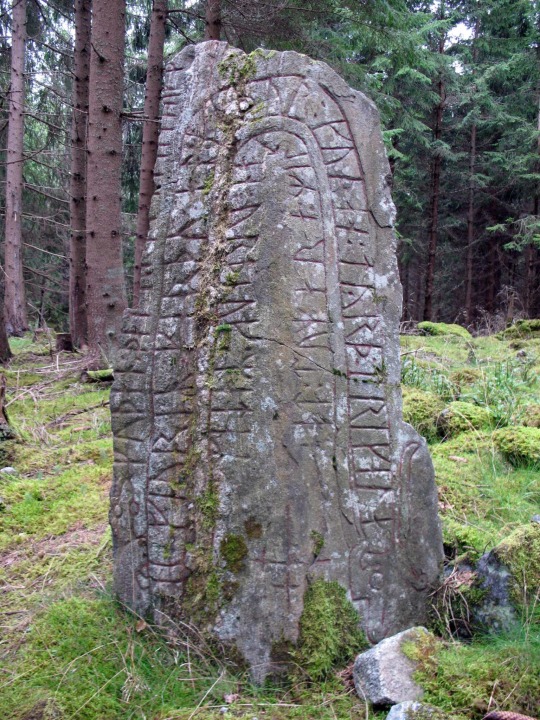

Runestone Sö 130 from Södermanland County, Sweden, commemorating a man who died in what would be modern-day Russia.
The Valkyrie of Hårby.

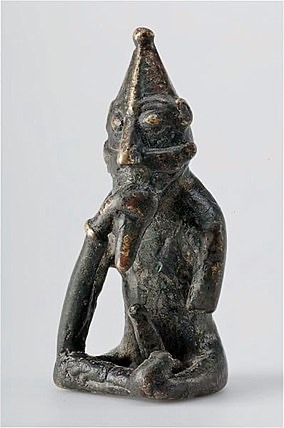
Völund the Smith wearing his feather guise.
The bronze Rällinge statuette (Södermanland, Sweden). Dates back to the Viking Age and depicts the God Freyr in a seated position.
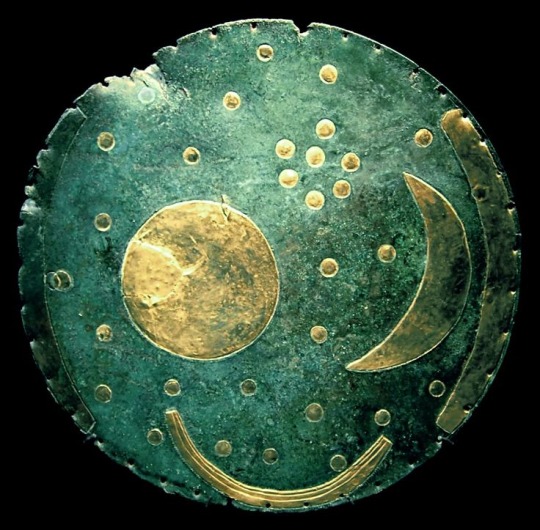

The Nebra Sky-Disc.
Stone from Snaptun, depicting Loki with his mouth sewn up.

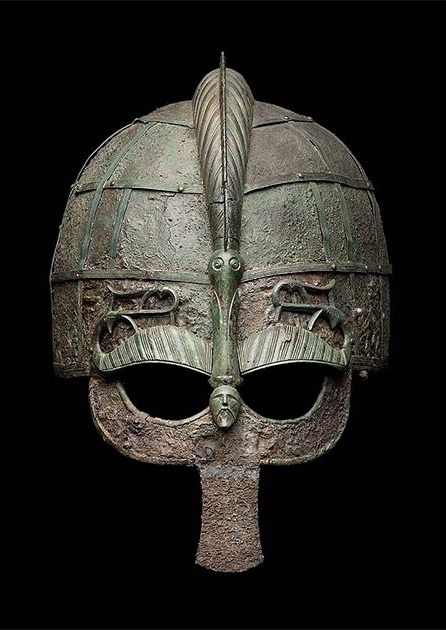
Vendel Period sword hilt (Valsgärde) and helmet. Still art, I mean look at them.
#art#historical#germanic religion#norse paganism#norse gods#deities#deity work#spirituality#polytheism#paganism#heathenry
183 notes
·
View notes
Text
Name of Odin attested 150 years earlier than previously thought!
A really cool discovery made by Danish runic and language history researchers from a huge gold treasure which turns out to be the oldest attested mention of the god Odin not only in Scandinavia but in the world.
Two Danish articles that I translated below, but tl;dr summary:
A historical discovery made my Danish archeologist, runic researchers and language history researchers reveals that there's attestations of the old norse god Odin by name about 150 years earlier than previously thought (not just in Scandinavia, in the world). The translation of a runic inscription on a bracteate contains the phrase "he is Odin's man", and the bracteate is dated to the 5th century. This means that at least in Denmark, there is an attested belief in Odin (and most likely the other old norse deities) much earlier than previously thought, but it is generally the oldest attestations to the named deity "Wōd[a]nas" (Odin) thus far discovered (previously oldest attestation was from southern Germany and the 6th century. In Denmark the oldest previous attestation was 8th century bone amulet). The discovery has also opened up new ways of translating runic inscriptions this old, which could help with further research of older texts that have previously been untranslatable.
EDIT: Also English article https://abcnews.go.com/Technology/wireStory/oldest-reference-norse-god-odin-found-denmark-treasure-97704339
Translation and Danish articles below, which also has images.
https://www.dr.dk/nyheder/indland/guldfund-afsloerer-danskerne-troede-paa-odin-thor-og-loke-langt-tidligere-end-foerst?fbclid=IwAR0x2RkzqvGCVn87f_W5gBMcp9B8jbCWEiXV-JX2j4ZmOvRh_1XEWJ9hOkU
Gold find reveals: The Danes believed in Odin, Thor and Loki much earlier than first thought
Runes on a huge gold treasure from Jelling show that Odin is mentioned 150 years earlier than has been seen before. The discovery shakes the whole of Norse mythology.
When the two amateur archeologists Jørgen Antonsen and Ole Schytz made the spectacular gold find in a field near Jelling almost two years ago, they also greatly shook our knowledge of Norse mythology. It turns out that one of the gold pieces contains the world's first attestation by name of the Norse god Odin. The so-called Vindelev treasure was previously described as the most spectacular runic find since the golden horns. But the name of the god gives this one an extra edge: - It is the first time in world history that Odin's name is mentioned, and it takes Nordic mythology all the way back to the beginning of the 5th century. That makes the Vindelev find even more spectacular, says script researcher Lisbeth Imer from the National Museum. According to the researchers, this means that the gods we know from Norse mythology were already known at the beginning of the 4th century, which is 150 years earlier than previously proven.
The discovery was made after the researchers spent quite some time trying to decipher the runes and carvings on the 22 gold objects with a weight of around 800 grams, so-called bracteate. On one of the bracteates the sentence 'He is Odin's man' is included and refers to the bracteate's portrait of an unknown king or “great man”. And it is this sentence that shows that the belief in the Nordic gods was real, earlier than people have believed until now. However, deciphering exactly what the runes actually meant has not been an easy task.
“The runic inscription has been the most difficult to interpret in my 20 years as a runologist at the National Museum, but the discovery is also absolutely fantastic,” explains Lisbeth Imer.
According to the researchers, the discoveries are important because they contribute to Danish history being rewritten.
“I have not seen such well-executed runes and such a long text on a Danish find from this period since the golden horns,” says Lisbeth Imer. “It could become a key to understanding other prehistoric runic inscriptions that we have not been able to read so far.
Krister Vasshus, who specializes in ancient language history in Scandinavia, is also pleased with the new finds. “We have found the proof in black and white, and it is a huge discovery. I can't put my arms down in pure ecstasy,” he says. According to the researcher, it is very rare that researchers even get the opportunity to examine similar material. “This type of inscription is extremely rare, we find one perhaps every 50 years, and this time it has turned out to be world history,” explains Krister Vasshus.
The Brakteaten is currently on display at the National Museum.
https://videnskab.dk/forskerzonen/kultur-samfund/verdens-aeldste-odin-fundet-i-vindelev?fbclid=IwAR366iLS8MWtkeWTrrqlIbMxygGlZ-tAWG9FJXFsqDRIabHh3o5LgMphBzo
The world's oldest Odin found in Vindelev
Ancient gold medallions found by amateur archaeologists turn out to be the oldest examples of the god Odin's name in the entire world.
In December 2020, two old friends and amateur archaeologists go for a walk with a detector in a field in Jelling. Little did they know that with the findings from this trip they were writing the history of Denmark - and gave us the most difficult task we have ever faced as runologists and language experts respectively. The Vindelev treasure, as the find has been called, with its 800 grams of real gold, is one of the largest gold treasures found here in recent times. It fascinates not only because of the red ancient gold, but also because of the bracteates - i.e. gold medallions - with runes found in the treasure. They write the history of Denmark.
100 years older than the earliest find so far
Two of the bracteates have some very long inscriptions in which the name of the supreme god of the Æsir, Odin, appears. The bracteates are dated to the fifth century and are thus the oldest examples of the god Odin's name in the whole world - at least for now. The oldest inscription previously in which the god Odin appears is from the southern German area. At a large burial ground near Nordendorf, the god's name was found scratched on the back of a suit buckle dating to the second half of the 6th century. In Denmark, we have to go back to the first half of the 8th century, i.e. on the threshold of the Viking Age, before we have Odin's name represented on a piece of a human skull from Ribe. Here, Odin is invoked as one of three gods who will help the owner of the amulet from illness. Odin's name is a well-known runic inscription from all over the world and is found, among other things, in a number of continental and Old English written sources, for example 'Origin of the Langobards', 'Sächsisches Taufgelöbnis' (the Old Saxon baptismal vow) and 'Nigon Wyrta Galdor' (The formula of the nine herbs). In this article, we will talk about why the Vindelev treasure is completely unique, and why the runic inscriptions on the old bracteaters have been one of the most difficult tasks for us.
Gold pendants
Excavations carried out by the Vejlemuseerne showed that in the area where the treasure was found, there had been a farm consisting of several longhouses and fences. The treasure therefore presumably belonged to the local magnate or king, who buried it inside the house or near the house. In the 5th and 6th centuries, rich magnates or minor kings used gold pendants to show off their status and wealth. The motif on these pendants, called bracteate, was inspired by the Roman imperial medallions. Many bracteates show a male person seen in profile, possibly in the company of a four-legged animal, which is probably a horse.
Is it Odin?
For many years, researchers have debated whether the people depicted on the bracteates are the god Odin, or whether they are kings, princes or magnates. The runic inscriptions on the Vindelev bracteates mostly indicate the latter. Perhaps bracteates were given away to important alliances. Saxo Grammaticus writes about the legendary king Frode that he had a gold necklace that could be used as a reward. This chain was composed of different links, which alternated with images of kings. Such chains with bracteates have been found in several places in Denmark.
Long runic inscription with the name Odin
One of the bracteates from Vindelev is very special and very valuable for research. It has a long runic inscription which is particularly well-formed and which makes linguistic sense. The inscription runs in a circle around the motif of the bracteate, which shows the face of a king seen in profile and with a nice hairstyle. In front of the face is a swastika and a semicircle - perhaps symbolizing the sun and the moon. Below the face stands a four-legged animal, probably a horse, with a marked harness and something sticking out of its mouth. The horse's ear points towards the king's open mouth.
Erased and written out in one go
Although the runes are very well formed and immediately easy to read, we have problems understanding the text. This is due, firstly, to the fact that the bracteate is very worn, so that the runes in important places are almost completely gone. Secondly, the inscription is written out in one go. That is, there is no pause between words, nor are there any signs showing where one word ends and the next begins. In addition, the language on the bracteate is more than 1,500 years old.
On the trail of a hunter
The first part of the text of the bracteate is particularly difficult, because there are partly words we do not know from other sources, partly words which do not seem to fit with the developments in the history of the language. The inscription possibly begins with the word hostiōz, which can mean 'sacrificial animal' (in the plural). In that case, it is a Latin loanword, which would mean that the word hostia was borrowed from Latin and embedded in the Old Norse language. In the long sequence that follows, there is probably a declaration that someone is helping a hunt or a hunter. We may also encounter a personal or nickname Jaga, which may even have been perceived as a pun on the verb 'to hunt' (“at jage”).
A king's locket?
We are most certain of the last part of the inscription. It says iz Wōd[a]nas weraz, which can be translated as 'he is Odin's man'. But who is this man of Odin? It must be the hunter who may have had the (nick)name Jaga. And who is the hunter or Jaga? We know that Saxo calls the images on bracteates kings, and we know that the bracteates imitate Roman emperor depictions. We must therefore interpret the inscription as a presentation of the depicted person, who is the king. The king is referred to as Odin's man, which points to his divine legitimacy, and perhaps also tells us that he is the supreme cult leader of that society.
Another Odin inscription in Vindelev
The long inscription appears to have been copied on one of the other bracteates, but in a much more poorly executed reproduction. This bracteate also shows a king seen from the side with a nice hairstyle above a horse with its ear pointing towards the king's mouth. In front of the face are the same symbols as on the first bracteate and in addition three dots which perhaps symbolize the stars. The inscription runs in a circle around the motif, and some of the characters are clearly runes, while others just look like or are blurred long lines. It seems that whoever made the inscription in the matrix did not fully understand the text, but copied the appearance of the characters as best they could.
Is there perhaps a holy text with the same meaning?
The meaning of the inscription has clearly been the same as on the first bracteate, but there is a detail which means that it cannot be interpreted as a direct copy of the first: the name Odin is spelled in a different way, and also it appears that the scribe has exchanged two runes. Where he actually wanted to write woþanas, he has written þowa(nas). The two runes, which represent the sounds /w/ and /þ/, are almost identical, which makes them easy to confuse - especially when the runes are only 2mm high. This means that there once existed a third inscription with the same content as on the two bracteate. It must have been a very important and perhaps sacred text that many have been interested in copying. There could be many good reasons for being filled by Odin's power and magical abilities as a king.
The solution to an old riddle
The long and complete inscription on the bracteate from Vindelev is the key to a number of unsolved riddles in the Iron Age. It shows that Odin is a very old deity, who was already known in the 5th century, and that the images of the bracteates should rather be interpreted as kings than as the god himself. And so it is the key to understanding how illegible bracteate inscriptions originally made sense.
A funny detail is also that the bracteate with the poorly executed text from Vindelev has a stamp-identical twin from Bolbro on the outskirts of Odense, made with the same pattern. The Bolbro bracteate was found in 1852 and has since then been in the National Museum's collections. There has thus been an ancient Odin inscription in the National Museum's exhibitions for the past 170 years - but no one knew that until the Vindelev treasure was found. Lisbeth M. Imer and Krister S. K. Vasshus will publish a scientific article about the runic bracteates from Vindelev in the international journal NOWELE (North-Western European Language Evolution), which will be published in April-May 2023. The Vindelev treasure can be seen in the National Museum's Danish exhibition 'The Hunt of Danish history' for the rest of 2023. The Bolbro bracteate is part of the permanent exhibition at the National Museum.
#odin*#odin#heathenry#norse mythology#forn sed#runes#archeology#asatru#danish history#old norse history
190 notes
·
View notes
Text
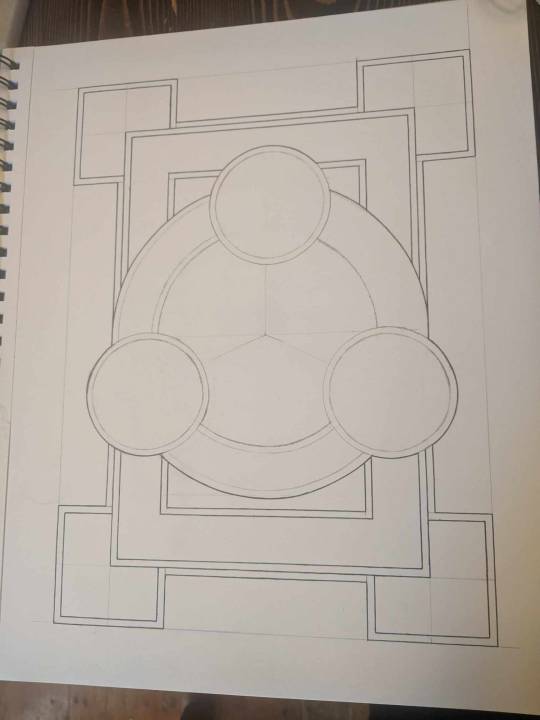

Laying out and sketching one of the full page illuminations for Beowulf, utilizing Anglo-Saxon bracteate motifs and Northumbrian zoomorphics. This piece will feature Beowulf in battle with the three monsters.
https://www.kickstarter.com/projects/tamburngospels/beowulf-an-illuminated-wonder-tale
#medieval#illumination#calligraphy#leatherbound#celtic art#celtic#tolkien#norse#middle earth#knotwork#viking#beowulf#anglosaxon
27 notes
·
View notes